Common wisdom suggests that a parent should encourage independence in their child from 11 up. But what if the parent and child get emotionally glued instead? Then, the child may develop codependency, meaning they may learn to derive their sense of self from others, believe their needs aren’t important, and become compulsive over-givers who depend on being depended on. Even when the other person in the equation is not their parent. Often, their adult romantic attachments will bear all the signs of a codependent relationship.
Codependency is among the most toxic and dysfunctional relationship dynamics you can share with someone. That’s why learning how to spot and tackle codependent behaviors and relationship patterns is not only wise but also vital for your well-being. To delve into the psychology of codependency, understand its facets, and learn about codependent relationship signs and markers, we’ve consulted relationship and intimacy coach Shivanya Yogmayaa (internationally certified in the therapeutic modalities of EFT, NLP, CBT, REBT, etc.) who specializes in different forms of couples counseling.
What Does A Codependent Relationship Feel Like?
Table of Contents
So what does a codependent relationship look like and feel like? According to Shivanya, people involved in codependent relationships slide into two roles — one partner becomes a caretaker/giver and the other a victim/taker:
- The taker needs constant support, attention, and help. They struggle with basic tasks, require perpetual hand-holding, can’t make decisions, feel completely dependent on their partner, and are willing to surrender their autonomy to them
- The giver is focused on meeting their partner’s needs — to the exclusion of everything else. They feel responsible for their partner’s feelings and actions and have a compulsive need to do everything for them. So much so, the relationship feels like a full-time job that takes up most of their time, energy, and mental space
Researchers initially associated these codependent behaviors and roles with the spouses and families of people suffering from addiction or substance abuse. But they have since detected codependent relationship traits outside of this group, too.
Healthy dependency vs codependency
Letting someone know they can lean on you. Worrying about them. Prioritizing their needs. Isn’t it natural to do this for the people you care about? Sure. So how do you know: Are you codependent or just caring? And where does the boundary between healthy love vs codependency lie? Here’s what makes codependence different from healthy relationship dependence or interdependence:
- Healthy dependence is based on mutual give and take, where both partners rely on each other and feel safe to express their needs. But codependent partners tend to form selfish and one-sided relationships. The giver only gives, and the taker only takes. Thus, there’s a huge imbalance of needs being met, which only stokes dissatisfaction and resentment
- People who build interdependent relationships grow together and give each other space to grow as individuals. However, codependents tend to form highly enmeshed relationships with no room to breathe, let alone grow

15 Indisputable Signs Of A Codependent Relationship
Codependency is a circular relationship that feeds into and is fed by a mutually reinforcing cycle. The giver, who usually has low self-esteem, tries to derive their self-worth from taking care of their partner and loses their sense of self in the process. Meanwhile, the taker’s instinct is to extract as much as possible from their partner while they continue to under-function and shirk all responsibility in the relationship.
Need we say why this is neither healthy nor sustainable? Studies have shown that such dysfunctional relationships can scrape away at life satisfaction, too. That’s why it’s important to look out for these top signs of a codependent relationship and take remedial action:
Related Reading: Responsibility In Relationships – Different Forms And How To Foster Them
1. Excessive TLC
Stacy and Mark have been together for six months. Mark is a recovering addict with a history of substance abuse. Stacy is intensely worried about his sobriety. So much so, she has become his housekeeper, manager, and cook, and does all the heavy lifting for him so he can focus on his recovery. Even if that means putting her job and well-being on the back burner.
This is among the classic codependent behavior examples. People with codependent personalities take excessive care of their partner and are given to self-negation. According to Shivanya:
- The caretaker tries to be a mother/father figure in their partner’s life
- They feel responsible for the dependent and try to monitor or manage their schedule
- Despite their best intentions, the caretaker ends up crippling the dependent, increasing their sense of victimhood
“Disproportionate concern and care are the beginning signs of an unhealthy relationship,” she cautions.

2. If you’re okay, I’m okay
Codependency is a learned behavior in which people learn to tune out their own thoughts and feelings and base their emotional temperature on what others around them think and feel. In romantic relationships, they try to constantly read and manage (or even, control) their partner’s moods and emotions. That’s because they only feel okay if their partner is okay. This emotional dependence is one of the early signs of codependent relationships.
And often, it is dual, which makes for a highly explosive equation:
- Emotionally codependent partners hold each other responsible for how they feel, so they wind up blaming each other for any and all negative feelings or bad moods
- At times, if one partner tries to share their emotional needs, the other gets super defensive or upset
The end result? Both partners rarely ever feel okay.
3. Overarching guilt
This is one of the telltale signs of codependency in a relationship. Caretakers take on all the responsibility for how their partners feel and act. So, they spend an inordinate amount of time anticipating their partner’s needs and feel guilty about saying “no” to their partner’s requests or carving any time out for themselves.
They also feel responsible for everything that happens to their partner – even things they didn’t cause, and have no control over or power to change. The takers take advantage of this sense of responsibility to tack all the blame on the caregivers and extricate themselves from all accountability whenever things go wrong, something the caretakers rarely counter. By shielding their partners in this way, caretakers become codependent enablers and end up encouraging their partner’s poor behaviors.
Related Reading: Accountability In Relationships – Meaning, Importance, And Ways To Show
4. Rushing to their ‘rescue’
Here is one of the most common signs of an unhealthy codependent relationship: “One partner is constantly Mr./Miss Fix It. They want to troubleshoot and do everything for their dependent partner,” says Shivanya. That’s because caretakers often have trouble recognizing and expressing emotions. They find it easier and less anxiety-inducing to act. So, they love to be needed and can’t step back and do less. They also can’t stop trying to fix a problem as soon as they spot it or hear about it. In fact, they’re itching to put on their cape and come to their partner’s “rescue” and take care of them.
This only reinforces the taker’s dependency. Over time, the caretakers get tired of having to fix everything and shouldering more than the fair share of responsibility for their “lazy” husband or wife, or partner. But when they call it out, the takers accuse them of “nagging”. And the relationship starts to sour.
5. Communication troubles
Poor communication is among the top signs of a codependent relationship. Healthy relationships are built not just on acceptance but also on the ability to call out our partner’s poor behavior. Especially if it’s something that could hurt them or others around them. That involves having difficult conversations and holding each other accountable.
“If you don’t identify their tendencies, who will? But most people involved in dysfunctional relationships like codependency have trouble communicating with honesty. The caretaker does not express what the victim needs to work on. The victim also doesn’t stop the monitoring or stand up for themselves,” Shivanya explains.
The lack of honest and open communication in the relationship paves the way to assumptions, resentment, anger, and conflict—which, by the way, is the very thing codependents move high heavens to avoid.
6. Conflict avoidance
Because of their people pleasers personality, codependents are afraid of hurting others’ feelings. They hate the discomfort of a fight, so they go to great lengths to ignore their true feelings just to sidestep or avoid conflict. To understand this, let’s take a look at some codependent relationship examples:
- Peter has been offered a dream assignment in another city. He wants to go, but he knows his wife Penelope would hate to move. To avoid conflict, he refuses the job without even discussing it with her
- Sally feels Dan has been spending too much time golfing on the weekends. But as soon as she mentions this, Dan starts to get irritated. So, she changes the topic and doesn’t bring it up again, though it continues to bother her
These are among the surefire signs of a codependent relationship. Codependents are deeply uncomfortable stating and negotiating their needs. So, they sweep problems under the carpet. That only causes them to accumulate and fester till the relationship implodes.
Related Reading: 7 Expert Tips To Resolve Conflict In A Marriage
7. Lack of individuality
You can’t talk about the warning signs of codependent relationships without addressing the lack of individuality within such relationships. Shivanya says, “One of the key codependent relationship traits is that the caretaker or benefactor devotes everything to their partner. Most of their time is occupied doing tasks for their partner. The victim, meanwhile, has surrendered their power to make decisions; they are happy to exist in a limited way of life.”
In fact, codependents make for a rather clingy couple that finds it difficult to function independently or have a life outside the relationship. They have no friends or hobbies or tend to latch on to their partner’s interests, without stopping to think about what they want. And that’s far from healthy.
A romantic bond, while important, cannot be life itself. Calibrating your choices based on your partner’s compass will only leave you discontented and lost. That’s why, knowing how to balance independence in a relationship is important.

8. Also lacking: Real intimacy
Still wondering what does a codependent relationship look like? Let’s look at another codependent behavior example: Mark struck up a conversation with Rachel in a grocery line and that led to one date. Now, Mark is:
- Acting and feeling like they are in a relationship
- Imagining a life with Rachel
Codependents suffer from instant relationship syndrome. They rarely take the time to know someone well before committing to them. They are relationship chameleons, who mold themselves to fit their partner’s life and views. Why? Because of low self-esteem and abandonment issues. They want to be liked and don’t think putting their authentic selves forward is the best way to do that.
But real intimacy cannot be built on smokescreens. That’s why, after the initial rush wears off, codependents often find themselves with partners they don’t feel close to, comfortable with, or trust. Their relationship feels like a house of cards: always shaky and never quite solid.
9. Blurred boundaries
According to Shivanya, a codependent connection is essentially dysfunctional. This is because persons in enmeshed relationships tend to lack the ability to set boundaries:
- They invade each other’s space often, and this has harmful repercussions. The dependent, for instance, completely relies on the caretaker to take care of all their emotional needs. The caretaker, meanwhile, says “yes” where most people no longer would. This gets exhausting and they eventually experience burnout
- In some cases, codependency leads to a breach of financial and sexual boundaries as well. This usually occurs when the caretaker gives the victim complete access to their finances or sets no ground rules in the bedroom
If, at any point, one of them tries to assert themselves or set boundaries, the relationship starts to get rocky. People who value their relationships respect their own and their partner’s boundaries. Blurred boundaries only lead to blurred identities and are one of the early signs of codependent relationships.
Related Reading: 15 Critical Boundaries In Marriage Experts Swear By
10. Stress: A constant
One of the most evident signs of a toxic codependent relationship is that it is a constant source of worry and stress for one or both partners:
- The caretaker experiences anxiety and stress because they are in charge of their partner at all times. The emotional and physical responsibility takes a toll on them and leaves them unhappy and bitter if it goes unnoticed or underappreciated
- The victim may experience comfort in giving up their autonomy initially, but after a point, they may also get stressed and come to resent the caretaker’s micro-managing
Being with your partner should bring you joy, comfort, and security. If it doesn’t, then it’s best to take stock and rethink why you need to stay put, if at all.
11. Missing: Self-esteem
The signs of a toxic codependent relationship are also invariably indicative of low self-esteem. Shivanya observes, “It’s a question of self-worth and self-image for both codependents. The caretaker has a compulsive need for approval and recognition.”
So, they may not even try to break the circular relationship pattern or help their partner become self-sufficient. That’s because they’re worried they will lose their sense of purpose if they do. They fear that once empowered, their partner will abandon them. “The victim is also not willing to take ownership of their life (since they need to feel cared for to feel worthy). They, too, are running on low self-esteem,” Shivanya adds.
If we aren’t tethered and secure in ourselves, we will seek completion or meaning through a partner. But determining our self-worth based on how useful we are to our partner will only lead to constant pain in the relationship.

12. S for sacrifice
Everything has an opportunity cost. The caretaker doesn’t just look after their partner; they do so at their own expense. “One of the signs of a codependent relationship is that the caretaker makes self-sacrifices with a sense of glory of service and they take pride in the choices they make for their partner. This could be anything – turning down a promotion, paying off debts, moving cities, etc.,” says Shivanya.
Though these sacrifices are made of the codependent’s own volition and in the spirit of selfless love, they corrode their sense of self and come back as resentments and chronic anger later. When it comes to self-sacrifice, we agree with what Ayn Rand says in The Fountainhead, “Self-sacrifice? But it is precisely the self that cannot and must not be sacrificed.”
Related Reading: Sacrificing In A Relationship – When, What And How Much?
13. Abusive relationship patterns
Since they reinforce problematic and codependent behaviors, most people who show signs of codependency in marriage or romantic relationships also find themselves trapped in patterns of abuse and toxicity. These usually play out in two ways:
- The victim (who often has a history of addiction) starts to feel entitled to their partner’s time and attention and becomes convinced their partner is incapable of leaving. So they begin to push boundaries, and this escalates into physical, emotional, or financial abuse
- Or, the caretaker begins to keep score of everything they have done, becomes bitter, and turns abusive. Their overarching need for control could also drive them to cross the line from caring to manipulating their partner to direct their behavior
Abuse, in any form, is a clear red flag and among the warning signs of codependent relationships that must never be ignored.
14. The past is prologue
Nobody wakes up one morning and decides to take charge of their partner’s life. Or, develops signs of a taker for that matter. So, if you’re wondering, “Why am I codependent in relationships?”, know that there are deeper factors at play. Codependent behaviors are learned behaviors.
In one study, participants traced their codependency and anxious attachment style to excessive parental rigidity, control, criticism, or perfectionism, along with a lack of support. According to Shivanya, early experiences form the template for many codependent behaviors:
- Maybe the caretaker learned to take care of people (perhaps an ailing family member) early on in life
- Similarly, the victim may have a history of helplessness and reasons underlying their surrender of selfhood
This tumultuous history exercises control over both since they haven’t made peace with the past, and this leads to their developing signs of codependency in a relationship.
15. Destination: nowhere
“No one can possibly spend a lifetime taking care of all their partner’s needs or letting their partner do everything for them. At some point, the caretaker will reach a breaking point, and the victim will try and break free,” says Shivanya.
One of the codependent relationship red flags is that it has no long-term direction. It fizzles quickly into a stagnant relationship or one that feels like a karmic relationship, where both partners feel trapped and wonder, “How do I leave?” But getting out of toxic relationships is hard.
Often, codependent couples keep drawing each other back in, till one of them has had enough. At any rate, “The end is quite painful for both parties involved,” adds Shivanya. That’s why recognizing codependency, especially toxic codependency, for what it is and learning how to stop being codependent and how to fix a codependent relationship is important.
Related Reading: 6 Steps To Take If You Are Feeling Trapped In A Relationship
How To Break The Cycle Of Codependency
“Why am I codependent in relationships?” That’s not something people ask themselves, their friends, therapists, or a support group early on. That’s because many behaviors linked to codependency, like putting others first, are encouraged in social settings and collectivistic cultures. This makes it hard for people to connect the dots between codependency and the anxiety, anger, or distress they feel or the problems they face in a relationship.
Also, codependent roles aren’t always clear-cut. At times, the same partner may display both sides of codependency, meaning they may be both a giver (say emotionally/financially) and a taker (sexually). So, spotting codependent relationship signs and learning how to break a codependent relationship cycle can be difficult. But it can be done. Codependency is a learned behavior, and like anything that is learned, it can be unlearned.
Related Reading: 11 Signs You Are In A Codependent Marriage
So how to fix a codependent relationship? Here’s how to stop being codependent, overcome dependency, and form healthy relationships:
- Acknowledge your patterns: Understand the difference between responsibility for yourself and responsibility to your partner. Learn to talk about boundaries and respect them. That will mean saying and taking no for an answer. Doing this without returning to old patterns is a process and will take time
- A conscious effort to break patterns: Identify codependent behaviors, record them in a journal if you need to, and replace them with healthier ones. For instance, instead of rushing to rescue the taker, the caretaker will need to learn to step back, be less than they can be, and put up with the resultant anxiety
- Focus on yourself: Learn how to be more independent in relationships and take charge of your own life. Turn your attention inward, spend time with yourself, and try and make decisions for yourself. Separate your goals and interests from your partner’s. For the people-pleasing caretaker, this would mean prioritizing self-care and learning not to feel guilty about it
- Communicate: Negotiate and communicate so you can stop walking on eggshells around each other. Build a safe space where you both can talk things through openly and honestly
- Tune into your emotions: Learn to sit with and deal with your own emotions. Be your own happy. Don’t count on someone or something outside of yourself to make you feel good
- Get professional help: Many people have emerged stronger from codependent relationships and broken the unhealthy cycle of codependency and emotional abuse with the help of therapy. So don’t be afraid to reach out for help. Our counselors from Bonobology’s panel are just a click away
Key Pointers
- When one of you slips into the role of a caretaker/giver/supporter and the other becomes a victim/taker, you’ve got yourself a codependent relationship
- Codependency stems from early environments and experiences
- Its signs include a lack of individuality, healthy boundaries, self-esteem, and open communication
- Abuse, self-sacrifice, conflict avoidance, constant stress, and excessive TLC also point to codependency
- Coping strategies for codependency include setting healthy boundaries, prioritizing self-care, replacing problem behaviors, rebuilding communication, emotional regulation, and seeking professional help
And just like that, we’ve covered some signs of an unhealthy codependent relationship, codependent relationship examples, and ways how to fix such relationships. Hopefully, these will help you spot potential red flags and address them. Remember, there is no such thing as healthy codependency.
This article has been updated in July 2023.
Your contribution does not constitute a charitable donation. It will allow Bonobology to continue bringing you new and up-to-date information in our pursuit of helping anyone in the world to learn how to do anything.



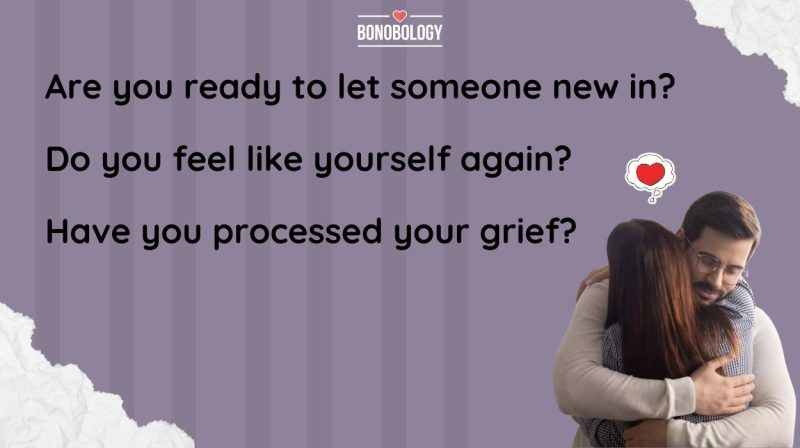
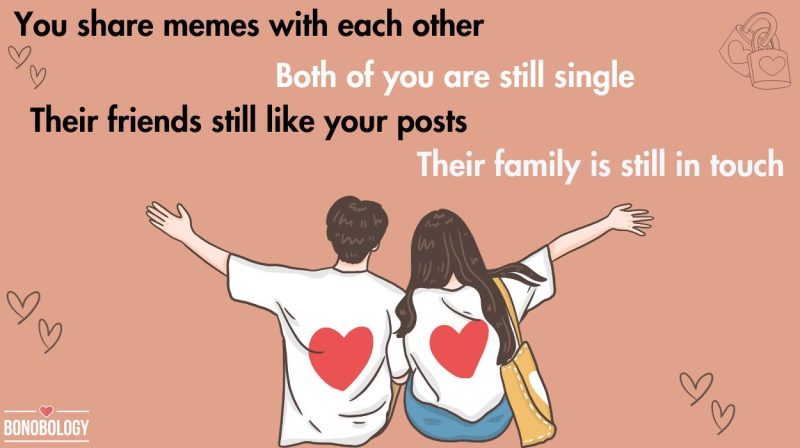


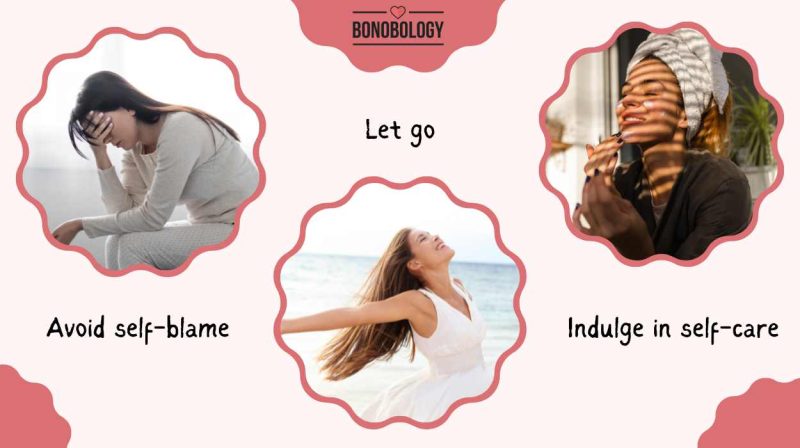
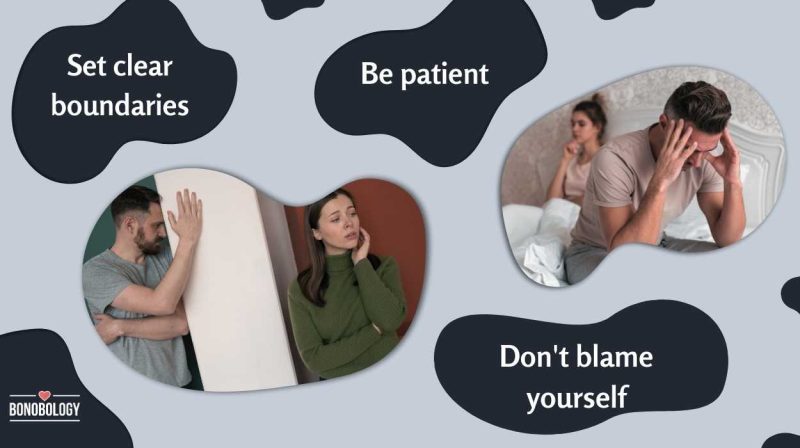
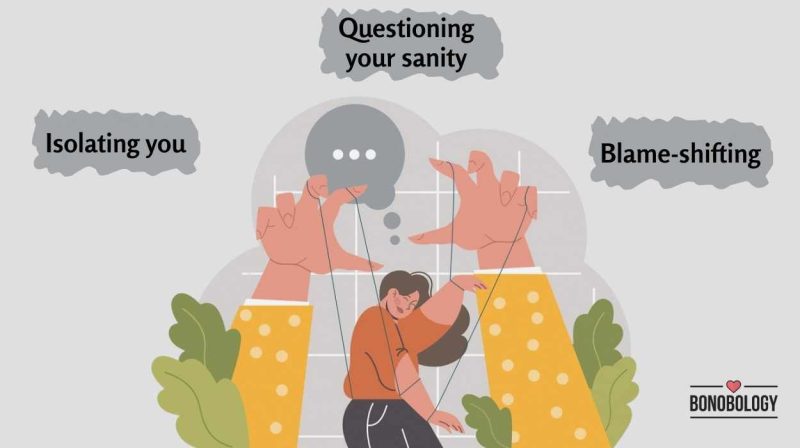
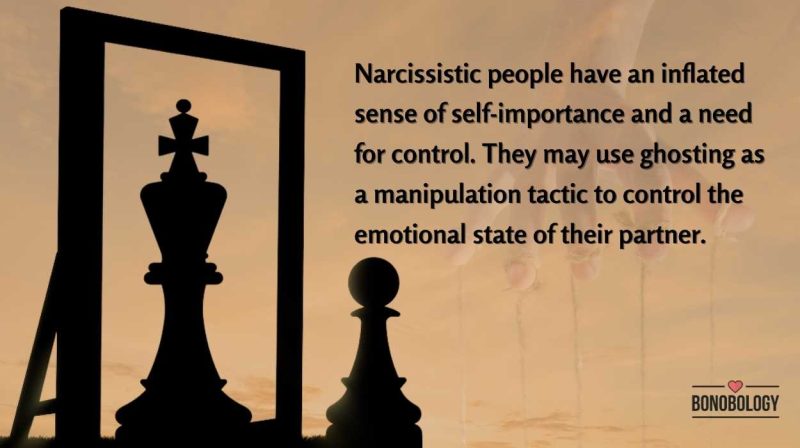
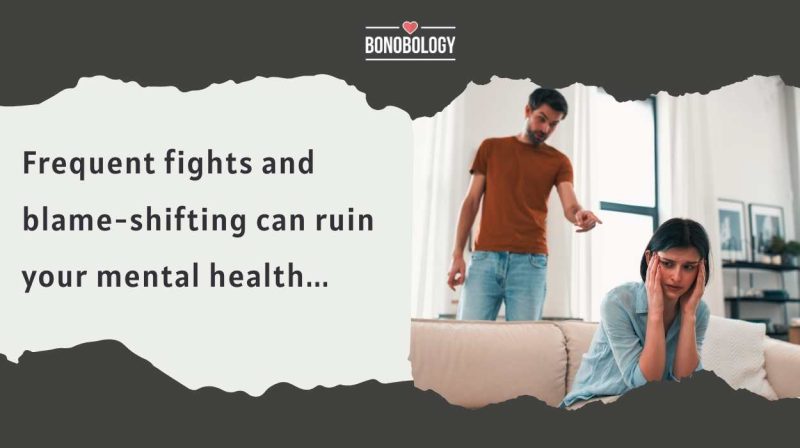
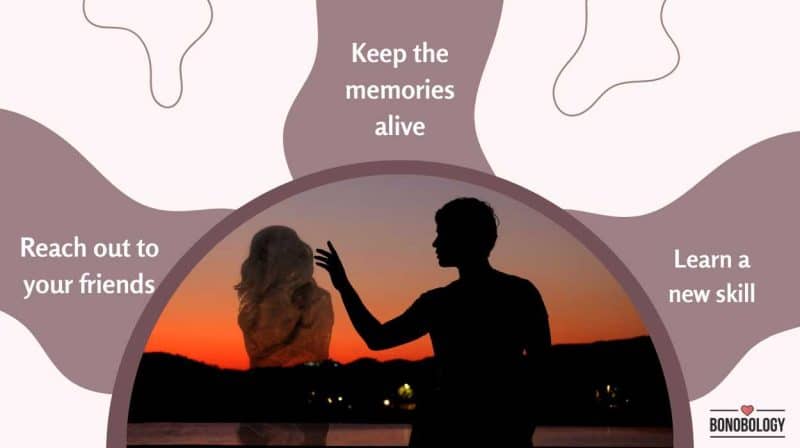


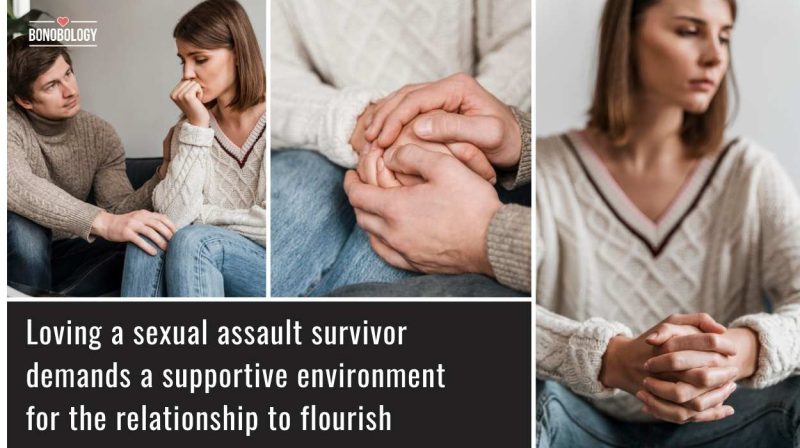
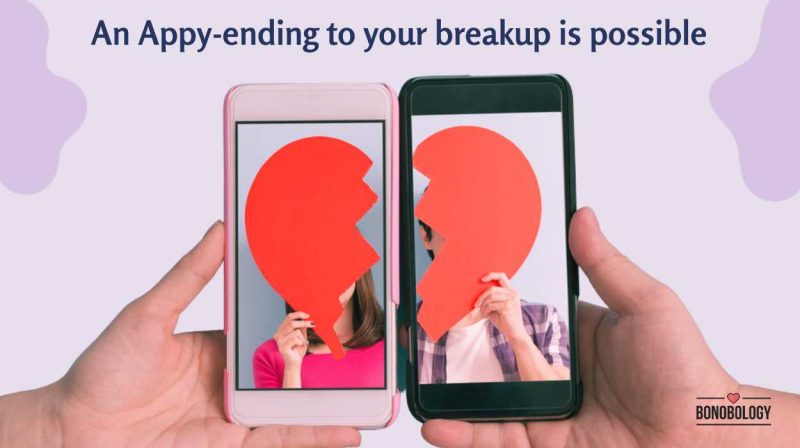
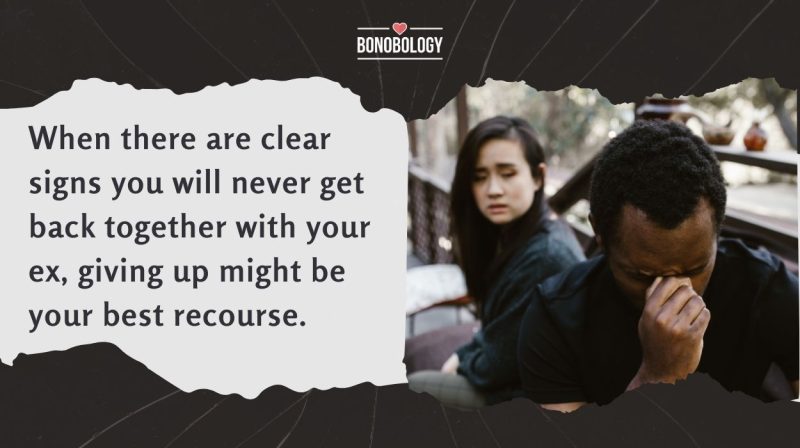
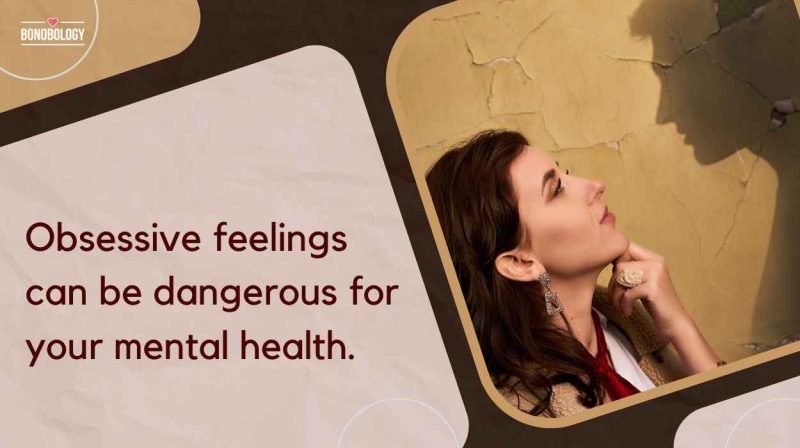
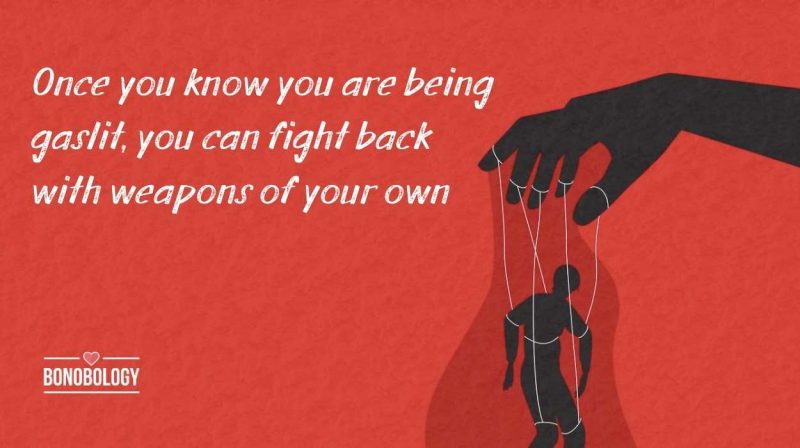
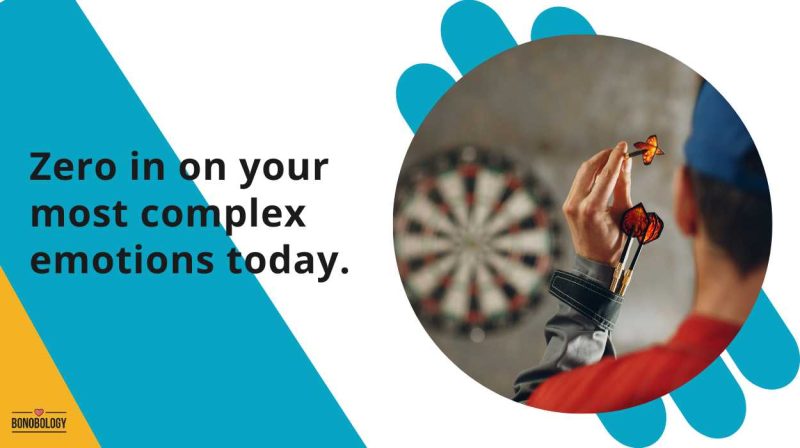

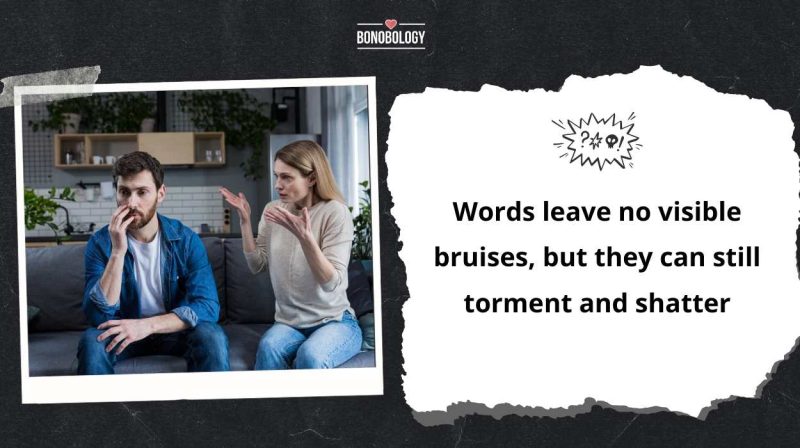
Featured
Am I Moving On Too Quickly After Death Of Spouse—How To Decide
15 Signs You’ll Get Back Together With Your Ex
How To Get Over Trust Issues — A Therapist Shares 9 Tips
Learn How To Forgive Yourself For Hurting Someone You Love
How To Find Peace After Being Cheated On — 9 Tips From A Therapist
How To Forgive A Cheating Husband: 15 Helpful Tips
35 Disturbing Signs Of Gaslighting In A Relationship
What Is Narcissistic Ghosting And How To Respond To It
‘My Husband Starts Fights And Then Blames Me’: Ways To Cope
How To Rebuild Your Life After The Death Of A Spouse: 11 Expert-Backed Tips
My Husband Died And I Want Him Back: Coping With Grief
“Am I Unlovable” – 9 Reasons You Feel This Way
11 Signs Your Girlfriend Was Sexually Abused In The Past And How To Help Her
Coping With Breakups: The Must-Have Breakup Apps For Your Phone
15 Signs You Are Wasting Your Time Trying To Get Your Ex Back
Why Are You Obsessed With Someone You Barely Know — 10 Possible Reasons
33 Phrases To Shut Down Gaslighting And Silence Gaslighters
The Emotion Wheel: What It Is And How To Use It To Build Better Relationships
The Role Of Supportive Relationships In Addiction Recovery
7 Signs You Have A Verbally Abusive Wife And 6 Things You Can Do About It